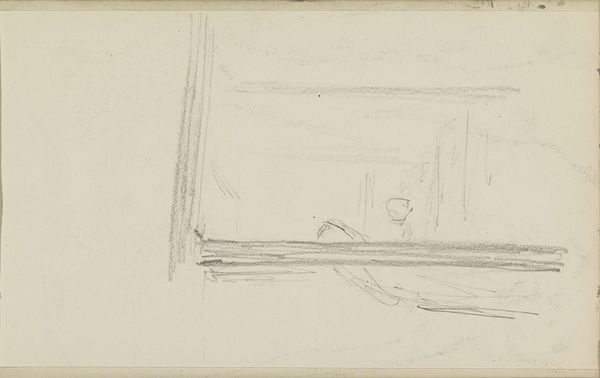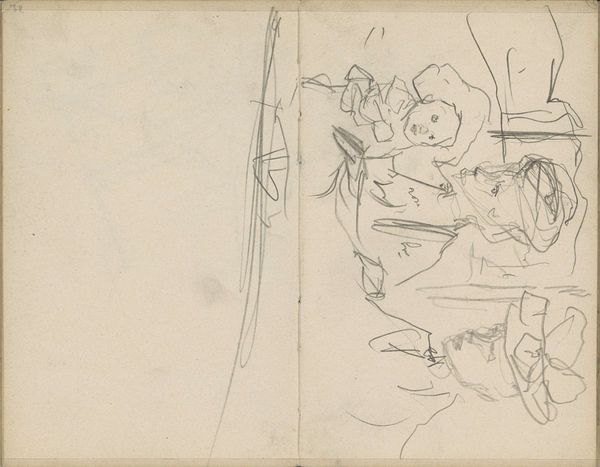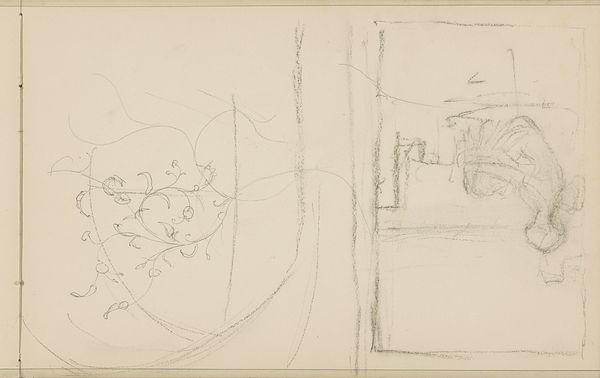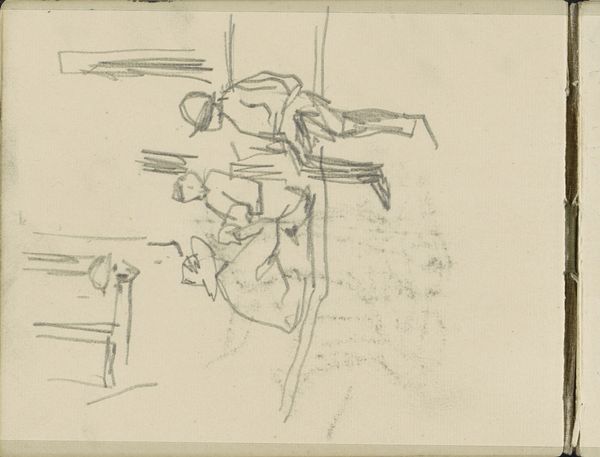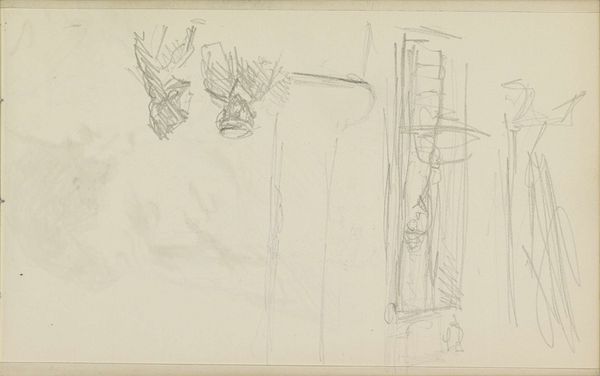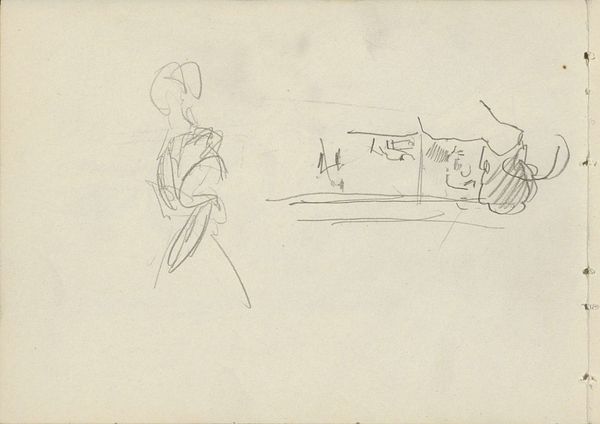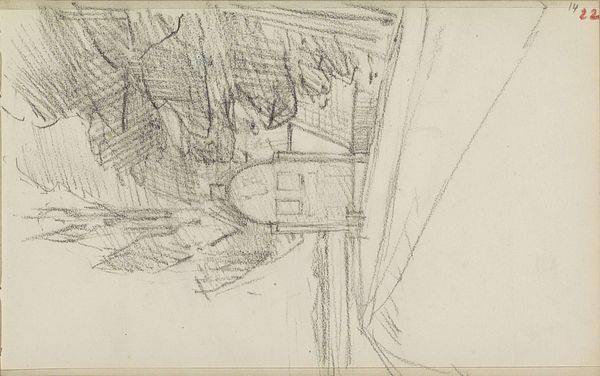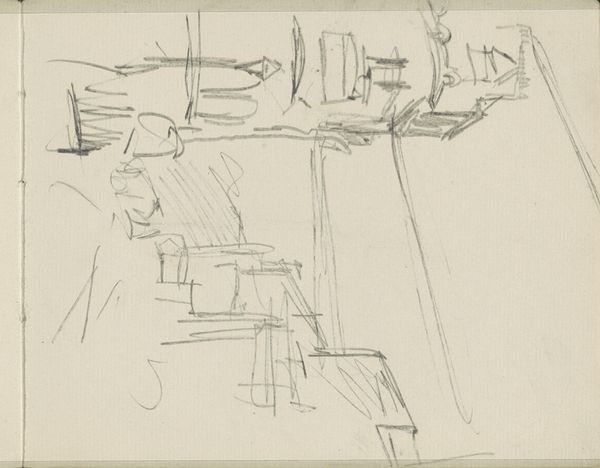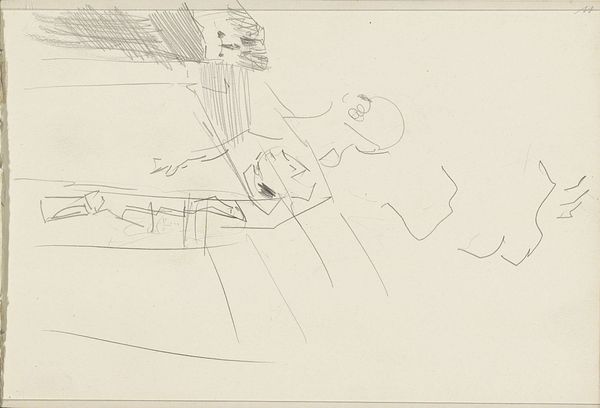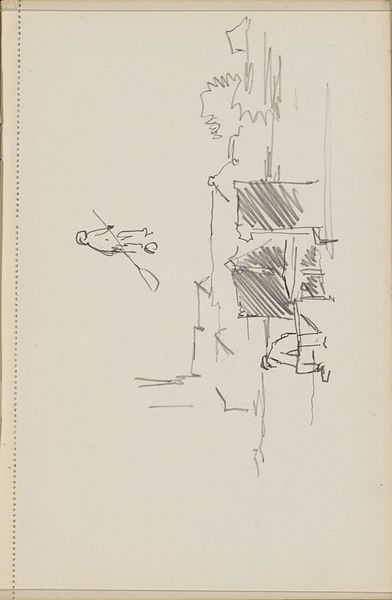
drawing, paper, pencil
#
drawing
#
comic strip sketch
#
quirky sketch
#
landscape
#
figuration
#
paper
#
personal sketchbook
#
idea generation sketch
#
sketchwork
#
ink drawing experimentation
#
pencil
#
sketchbook drawing
#
storyboard and sketchbook work
#
sketchbook art
#
initial sketch
Copyright: Rijks Museum: Open Domain
Curator: This is a drawing entitled "Twee figuren bij een trap, vermoedelijk in een kerk," which translates to "Two Figures by a Staircase, Probably in a Church." It’s a piece created between 1865 and 1913 by Bramine Hubrecht. Editor: It has such a ghostly, unfinished quality. The rapid, almost scribbled lines create a feeling of transience, like the scene is barely there, on the verge of disappearing. Curator: Precisely. And considering Hubrecht’s gender in this era, think about the spaces accessible, or not, to women artists. Churches, typically patriarchal spaces, become settings of observation, liminal spaces for women artists. What did it mean to depict them? Editor: The staircase is the central focus and evokes potent symbolism. Staircases often suggest ascension or movement between different realms, be it physical, spiritual, or psychological. Curator: Yes, the architecture reinforces notions of hierarchy and access, crucial for thinking about social power. Are these figures ascending, or confined within its structure? Are they clergy? Outsiders? We don’t really know, and perhaps that ambiguity is intentional. Editor: There’s an undeniable austerity evoked here, as well. It may speak to personal reflection, quiet contemplation, a feeling of exclusion, as one stands before a barrier. Curator: Also, note the style—the quick sketches typical of an artist using pencil and ink to quickly jot down ideas in a personal sketchbook. Hubrecht perhaps wasn’t making a statement as much as exercising observational freedom as a woman within her particular historical and social position. Editor: And the almost obscured faces of the figures! Anonymous, everyman representations open to projected personal narratives. Each viewer becomes another phantom haunting these sketched spaces. Curator: The simplicity in its rendering invites such reflection, as it invites contemporary consideration of social dynamics regarding space, place and belonging. It speaks volumes. Editor: For me, it’s this potent intersection of visible symbol and whispered implication that lingers, inviting a layered contemplation from every vantage point.
Comments
No comments
Be the first to comment and join the conversation on the ultimate creative platform.
